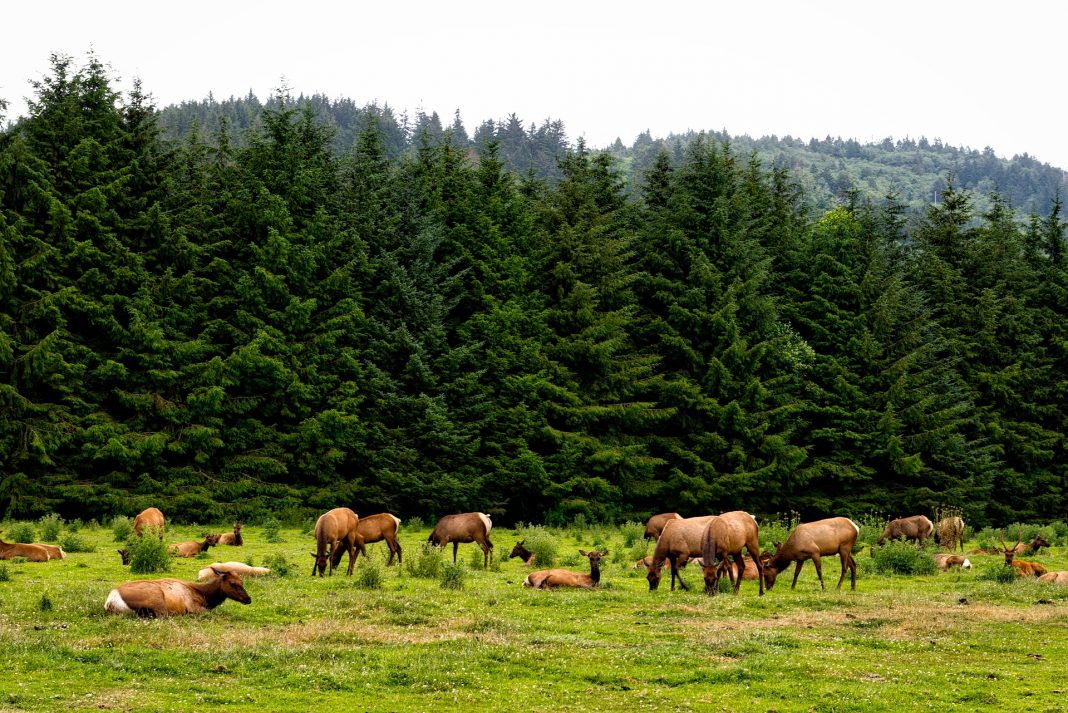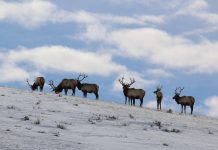This winter was a harsh one for wildlife across the west and it appears it had a significant effect on an elk herd in Montana.
According to a report by The Missoulian, over half of The North Hills-Evaro herd has disappeared.
Liz Bradly, a Montana Fish, Wildlife & Parks biologist, conducts aerial elk counts every spring. “The spring green-up pulls the elk out into the open where they’re easy to count,” Bradley said. “I did my first survey in April, and the count was really low — lower than expected. So I flew it a second time a week later and got the same thing. That’s how I double-check myself, and it’s not an area where it’s easy for elk to hide.”
The herd had an objective of 300. During the spring fly over, Bradly counted 146.
With healthy bear and wolf populations in the area, some might blame predators for the sharp decline, but Bradley says there is no evidence of unusual predation.
The weather could also be to blame for the decline. The area experienced an arctic outbreak in late March. It was a critical time for wildlife as their fat stores were depleted so survival was difficult. Bradley found that the sub-adult elk had a low survival rate. Pregnant cows were also likely affected, and may not be well enough to give birth.
Others point to how heavily the herd was hunted over the past 2 years. The elk live in an area with many ranches. To reduce crop damage and livestock confrontation FWP issued OTC Private Land cow tags and late season hunts in addition to the special draw. This brought the heard down to its objective.
“We don’t think what we’re seeing can be attributed to just harvest,” Bradley said. “It’s more likely displacement, although we’re not seeing them in adjacent hunting districts. We don’t know where they went. That’s the mystery.” With such a severe decline, MFWP would expect to see the neighboring Mount Jumbo elk affected, but it appears unchanged.
Over the next few weeks, Bradley will analyze the data and present a plan that may include eliminating the late season or limiting cow harvest.
“We’ve been trying to figure out a way to keep harvest on that population,” Bradley said. “It’s a challenging place to get a harvest because the elk are on private land a lot. And they’ve trended toward going up, not down, for a lot of years. This is an interesting shift, and I don’t think what we’re seeing can be attributed to just harvest.”
The matter, amongst others, will be discussed at the annual meeting of the North Hills-Evaro Elk Working Group at 7 p.m. on May 29 in the Montana Department of Fish, Wildlife & Parks meeting room.
What do you think the cause of the severe decline is?















